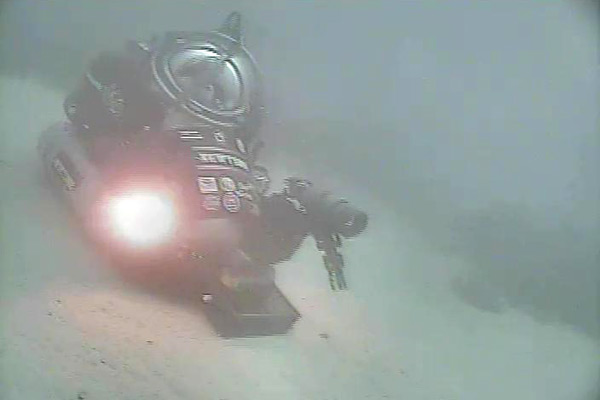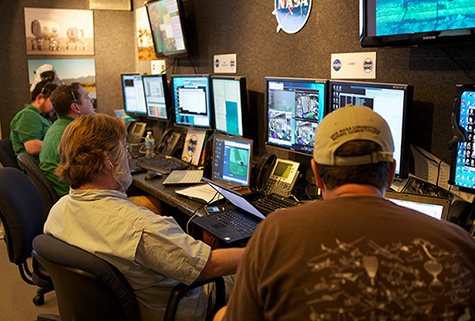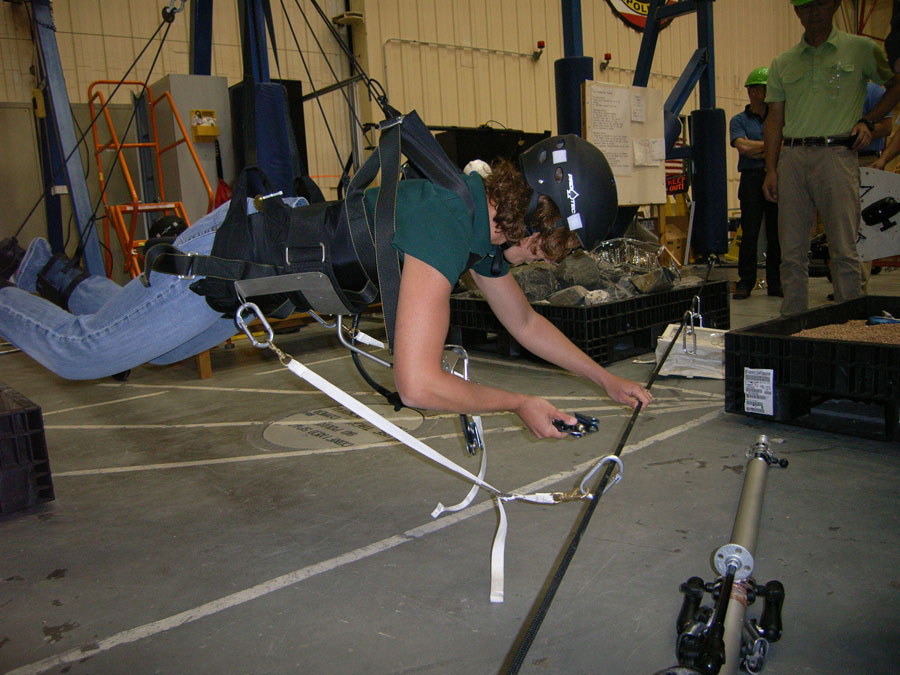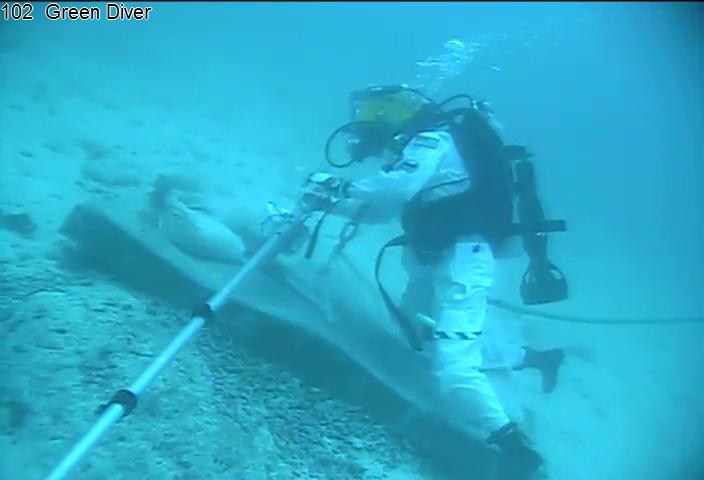
Image: One of the DeepWorkers that Dr. Love would have piloted during NEEMO 15.
Dr. Love’s Underwater Blog 2011 #1
October 25
Key Largo, FL
Welcome back to Dr. Love’s Underwater Blog!
For readers new to the blog, I posted the first installments in March 2010, while I was in Vancouver, Canada learning how to pilot the DeepWorker submarine from the experts at Nuytco. I wrote more entries in July 2010 from Pavilion Lake, where I spent a week driving submarines and serving as support crew on the chase boats while we made surveys, took photographs, and collected samples to try to understand the strange coral-like “microbialite” growths on the bottom of the lake. Pavilion Lake was a bizarre and beautiful environment to explore by submarine, with near-freezing crystal-clear water, steep underwater slopes forested with sculptured calcium carbonate knobs and towers, and mathematically flat basin floors carpeted with snowy white calcite fluff.
This year I was planning to return to the cozy cockpit of the DeepWorker to support the 15th NASA Extreme Environments Mission Operations (NEEMO 15) at the Aquarius underwater habitat near Key Largo, Florida. Fellow submersible pilot Ricky Arnold and I made it as far as the operations base in Key Largo, but then the plan changed. This happens commonly in field operations, but it’s always exciting when in happens.
In our case, the culprit is Hurricane Rina, which is rapidly strengthening in the Caribbean Sea east of Belize. It’s not a threat to us right now, but the forecast shows it heading this way. Because it takes several days to safely get the aquanauts to the surface (without subjecting them to the risk of decompression sickness) and secure all the boats and other assets that support NEEMO, the folks in charge had to make a decision this morning. They decided to take the safest course of action.
So no DeepWorker driving for Dr. Love this trip…but the Underwater Blog can go on, because two days ago I had a chance to scuba dive at the habitat. Boy, was that ever different from Pavilion Lake! Warm water, substantial current to swim against, swarms of colorful tropical fish, and every solid surface encrusted with corals and sponges. We also had a chance to poke our heads into the habitat and chat with the aquanauts. It’s a very strange experience to swim 50 feet down under the sea, then poke your head up into air and talk to folks wearing street clothes. Since Halloween is coming soon, we said “Trick or treat!” and explained that we were dressed as scuba divers. The aquanauts thought that was silly, but gave us candy anyway.
The following day (yesterday), the NEEMO team was still operating according to the planned schedule, and I had the opportunity to work as a CAPCOM on board the support ship for that day’s DeepWorker operations. At Pavilion Lake, we launched and recovered the subs from a barge made from two big rectangular steel floats, with a gap between them and an overhead chain hoist for raising and lowering the subs. This ingenious setup worked great, and had the advantage that it could be easily broken down into components small enough to transport by truck to a remote mountain lake and to place in the water using a mobile crane. At NEEMO we operate on the world ocean, which means we can use oceangoing ships. In our case, we have the great fortune to be able to use the Liberty Star, one of the two small ships that NASA used for thirty years to go out to sea after each Space Shuttle launch, find the two solid rocket motors that separate from the stack two minutes into flight and parachute into the ocean below, and tow them back to port so they could be inspected, taken apart, refurbished, re-filled with solid propellant, and used again to boost another Shuttle toward orbit. What a treat to work aboard such a historic vessel!
Liberty Star has a large crane on the aft deck that makes light work of hoisting a DeepWorker in and out of the water, even in 3-5 foot seas. It has an air-conditioned bridge from which we tracked the subs and operated the equipment that let us communicate with them. And it has a full galley serving three square meals a day. It made a spectacular platform for supporting the submarine operations. It also made a great observation platform. At one point a school of flying fish came by, gliding from wavetop to wavetop. Another sight unknown at Pavilion Lake.
So that’s all for the Underwater Blog this trip. But the next time NASA sees fit to put me underwater again, I’ll be ready to share the experience.
Cheers,
Dr. Love





